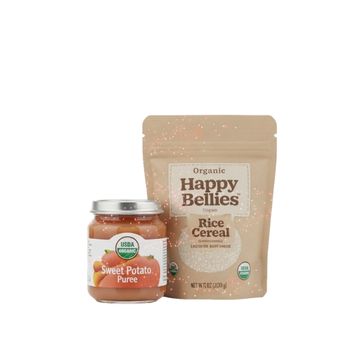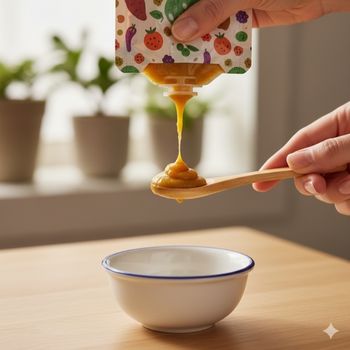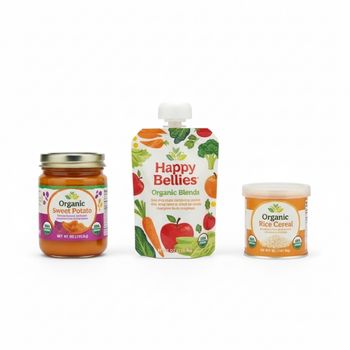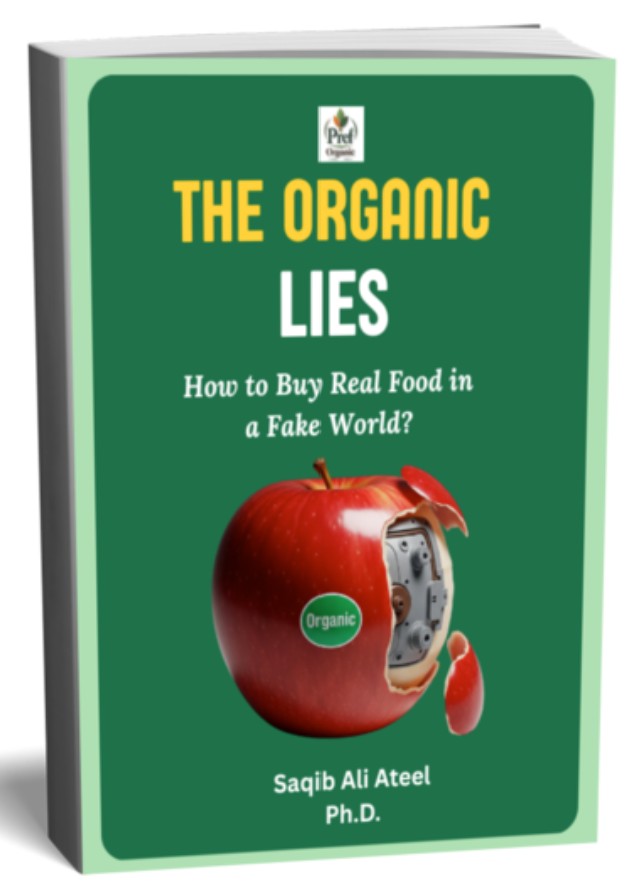Organic Baby Food Pouches vs Jars: The Safety & Nutritional Guide for Modern Parents 🍎🧠
You chose organic. You paid the premium. You deserve peace of mind.
But does that little pouch or glass jar actually deliver the safety you paid for?
As a student focused on sustainable agriculture, I’ve spent years researching food integrity. As a parent who grew up farming, I understand your exhaustion and the pressure to make the right choice. The confusion you feel is real.
Choosing between organic baby food pouches, jars, and powders is not about convenience. It is a high-stakes decision about custodial safety—what we call YMYL (Your Money or Your Life) content—that affects your child’s brain and body development.
My job is to cut through the marketing noise. Let’s eliminate "fear-based feeding" and replace it with a confident, research-backed strategy. Here is the critical data you need now:
Three Non-Negotiable Facts for A Cautious Parent
- The "Organic" Label is a Health Halo, Not a Safety Shield: The label only confirms farming practices. It offers zero protection against contamination from toxic organic baby food heavy metals (such as lead and arsenic) that naturally occur in soil.
- The Pouch is a Developmental Trade-Off: Its sucking mechanism bypasses critical oral motor practice. If used too frequently, the pouch can delay the jaw, lip, and tongue skills needed for chewing and transitioning to solids.
- Demand Proof, Not Promises: Given the contamination crisis, you must look past the "organic" stamp. Only trust brands that publish verifiable, lot-specific heavy metal testing results.
The Core Problem: Where Parental Trust Breaks Down
When I’m out in my home garden, I know exactly what goes into the soil. I trust the process. When you buy a commercial product, you transfer that trust to the manufacturer.
Here are the two ways that trust is frequently compromised, even in premium organic products.
The Heavy Metal Crisis: A Threat from the Earth

News about heavy metals in baby food is not speculative; it's the subject of ongoing litigation and congressional review.
The alarming fact: 95% of all commercial baby food products tested contained one or more toxic heavy metals. This includes lead, inorganic arsenic, cadmium, and mercury.
Why organic doesn't help: As a researcher, I know metals are naturally found in the Earth's crust. Crops like rice and root vegetables—used in many baby foods—absorb these elements from the soil and water. Organic standards regulate pesticides and fertilizers, but they cannot regulate the geology of the soil itself. Your commitment to buying organic is admirable, but it doesn't solve this specific safety problem.
The Hidden Sugar Game: Breeding Sweet Palates 🍬
Modern parents are busy. Manufacturers capitalize on this by making food taste irresistible to babies—which usually means sweeter.
Infant foods sold in pouches statistically show lower overall nutritional value than those in organic baby food jars .
Why?
1. The Sweetener Secret: Manufacturers mix vegetables with large amounts of fruit puree or juice concentrates to boost acceptance. Only 9.1% of products even included bitter green vegetables like spinach or broccoli.
2. Label Loopholes: Companies often claim "no added sugar." However, 59% of the tested pouches making this claim still contained free sugars derived from concentrated purees. These can be just as sugary as raw fruit, but they are concentrated and delivered quickly.
The Consequence: This constant sweetness biases your baby’s palate. It makes introducing healthy, savory, and less palatable green vegetables harder later in life, contributing to picky eating and nutritional displacement.
Format Showdown: Jars vs. Pouches vs. Powder
Your choice of delivery system is as important as the ingredients. It dictates whether your baby learns to chew or just suck.
Organic Baby Food Jars: The Developmental Coach 💪
Glass jars are clean. They provide transparency. I like knowing what I see is exactly what I get. They also alleviate concerns about microplastics that some parents have.
The jar forces you to use a spoon. That is critical. Spoon-feeding is the practice drill for chewing. It trains the lips to close, the tongue to manipulate food, and the jaw to coordinate movement. These are non-negotiable foundations for transitioning to textured foods.
- Best For: Primary meal delivery, single-ingredient purees, foundational spoon-feeding skills.
Organic Baby Food Pouches: The Convenience Crisis 🛑
Pouches dominate the market because they are the ultimate solution for travel and mess reduction. I won't deny their convenience.
If a pouch is used for continuous, direct sucking, it becomes a developmental roadblock. It bypasses the muscle work necessary for chewing, potentially delaying texture acceptance and creating feeding issues. Consistent reliance on the thin texture of pouches during the critical 8-10 month transition window is precarious.
- Risk: Oral motor delay, high risk of concentrated free sugars, reinforces a sweet palate.
🛠️ Your Actionable
Intervention: Taming the Pouch

If you need the convenience of organic baby food pouches, follow this rule: Never let your child suck it directly.
Squeeze the contents onto a spoon or into a bowl. You retain the convenience of the portable food, but you force the child to practice the correct oral motor skills with the spoon.
Problem solved.
Look for innovative, savory, or protein-rich blends (like bone broth or meat purees) that are veggie-forward to break the sweetness cycle.
Powdered Meals: The Innovative Travel Hack ✈️
The newer, shelf-stable powdered options—like those from brands like Amara—offer a compelling middle ground.
The Scholar’s Take (Integrity): These brands often use highly controlled, low-heat processes to preserve nutrients, which is superior to some traditional canning methods.
The Safety Advantage: Because they are innovative, these brands tend to be hyper-aware of the heavy metal mandate. They often use deep supply chain vetting, requiring farmers to pre-test crops, and some intentionally avoid rice, a major arsenic source.
- Best For: Travel, backup meals, and highly quality-controlled, rice-free options.
The Safety Vetting Matrix: How to Buy Smarter 🧠
Stop relying on the "organic" label alone. Use this matrix to demand verifiable safety and nutritional integrity.
The Safety Vetting Matrix: How to Buy Smarter 🧠
| Safety Factor 🛡️ | The Parent’s Action Plan 💪 | The Trusted Signal to Look For ✨ |
|---|---|---|
| Heavy Metals ☠️ | Demand Published Testing. Only purchase brands that proactively disclose their final product test results for lead, arsenic, and cadmium. | Clean Label Project Purity Award. This certification requires testing for over 400 contaminants, including heavy metals and plastics. |
| Nutritional Integrity 🍎 | Scrutinize the Top Three Ingredients. If concentrated fruit puree or juice is listed first or second, the product is likely high in sugar, regardless of the "no added sugar" claim. | Savory Focus. Prioritize purees that are vegetable, protein, or bone broth-based to ensure a balanced diet and palate. |
| Oral Development 👄 | Spoon Feed Purees. Use organic baby food jars or spoon-fed pouches for all meals until chewing is established (around 10 months). | Texture Progression. The USDA and pediatric guidance prioritize appropriate texture progression for age. |
Conclusion: Confidence Over Convenience

The optimal strategy for the modern parent is a hybrid one: Jars for Development; Vetted Pouches for Travel; Powder for Integrity.
You are the proactive protector of your child’s health. By demanding transparency on organic baby food heavy metals and prioritizing developmental milestones, you move beyond marketing and make confident, authoritative choices.
You’ve got this.
Further Reading
1. U.S. Food and Drug Administration (FDA) Guidance for Industry on Lead in Processed Food:
2. American Academy of Pediatrics (AAP) Information on Toxic Metals in Baby Food
3. Clean Label Project: Unmasking Hidden Contaminants
